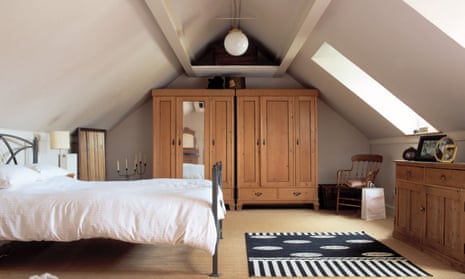Our changing homes provide an excellent reflection of our changing lifestyles. Over the years, as our lives have become less functional and more about leisure, our homes have gone on a similar journey.
A survey of over 2,000 homeowners has looked into property development over the past 50 years and provides an interesting window into our changing lifestyles. Fifty years ago, homeowners named cooking and washing areas as the key locations for home improvements, whereas today homeowners would most like to improve their entertaining space. This suggests that the British are making the most of their homes as a social space for family and friends and are taking ever more pride in home appearances.
Homeowners were divided on the question of open-plan living, with both open-plan and separate dining rooms cited as home improvement priorities alongside state-of-the-art television, music and cinema rooms, or improving access to the outdoors by adding sliding doors. Surprisingly, when a bath is difficult to afford for first-time buyers in some parts of the country, a wet room also topped the list of dream requirements – presumably with the funds for a live-in housekeeper to ensure that the grouting doesn’t go mouldy in the notoriously damp British climate.
Looking to the future, we can expect this trend towards a more leisurely lifestyle to continue. Only time will tell if every future home will have a robot fridge but inevitably the internet of things, where everyday objects are connected to the web, is heading to our homes in coming years. This might be in the form of energy-efficient products such as thermostats, security systems and front-door locks that can be controlled remotely via smartphone apps, or cleaning robots. Chris Green, designer in residence at the Design Museum, is looking into the future of drone technology and proposes that domestic drones could become commonplace within five to 10 years, rethought as companions who can look after our home security and even our wellbeing, calling a doctor when we fall ill.
But the backlash is also on the way. At this year’s London design festival several products were launched in reaction to the stress of relentless connectivity. Jasper Morrison has designed a mobile phone for Swiss brand Punkt that can only make calls or send text messages. It’s intended as a phone used only when executives want to leave their smartphone in the office and switch off from interruptions of unimportant work emails and Instagram alerts to focus on what’s important. Perhaps in 10 years’ time, next door to the entertainment room, we’ll see the inclusion of a Wi-Fi-free zone on the wishlist of home improvements, allowing us precious time away from super-connectivity.
The major improvements in our homes over the last 50 years have been basic things like central heating, hot running water and better insulated windows, which have improved the quality of our lives immensely. According to the survey, by Anglian Home Improvements, saving on bills, adding value to property and saving on the cost of a move were the main motivations behind modern home improvements. As the UK’s housing stock grows inexorably older and the costs of energy increase, it’s becoming ever more important for people to make their homes more efficient.
As house prices increase beyond the affordable – at least in the south-east, where some lucky homeowners can make as much from the growing value of their home as from their salaries – and one-off taxes such as stamp duty make the cost of a move prohibitive, trading up to a larger home can become impossible. So rather than moving to the ’burbs, homeowners are getting smarter and making the most of what they’ve got. Property owners are taking on serious home improvement projects such as adding a slick back-garden extension with sought-after bi-folding doors, or converting the loft into additional bedrooms or a master bedroom suite.
This can only be a good thing for the UK’s architecture and interior design industries, where professional expertise can transform a bog-standard terrace into the dream home of the future. We may not be building enough new homes, but with carefully planned development we can make the most of the ones we have.
